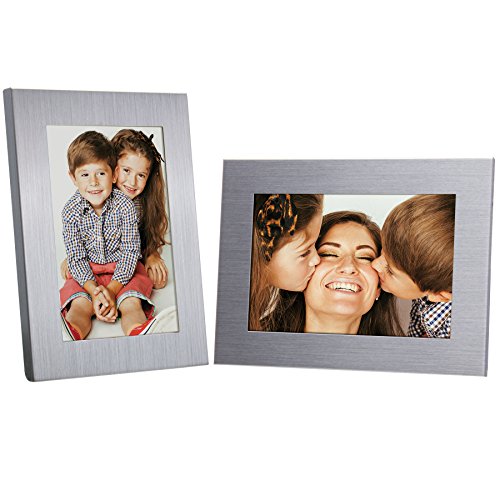Picture Frame Size Selector
Looking for the perfect fit? Check Out These Best-Selling Picture Frame.
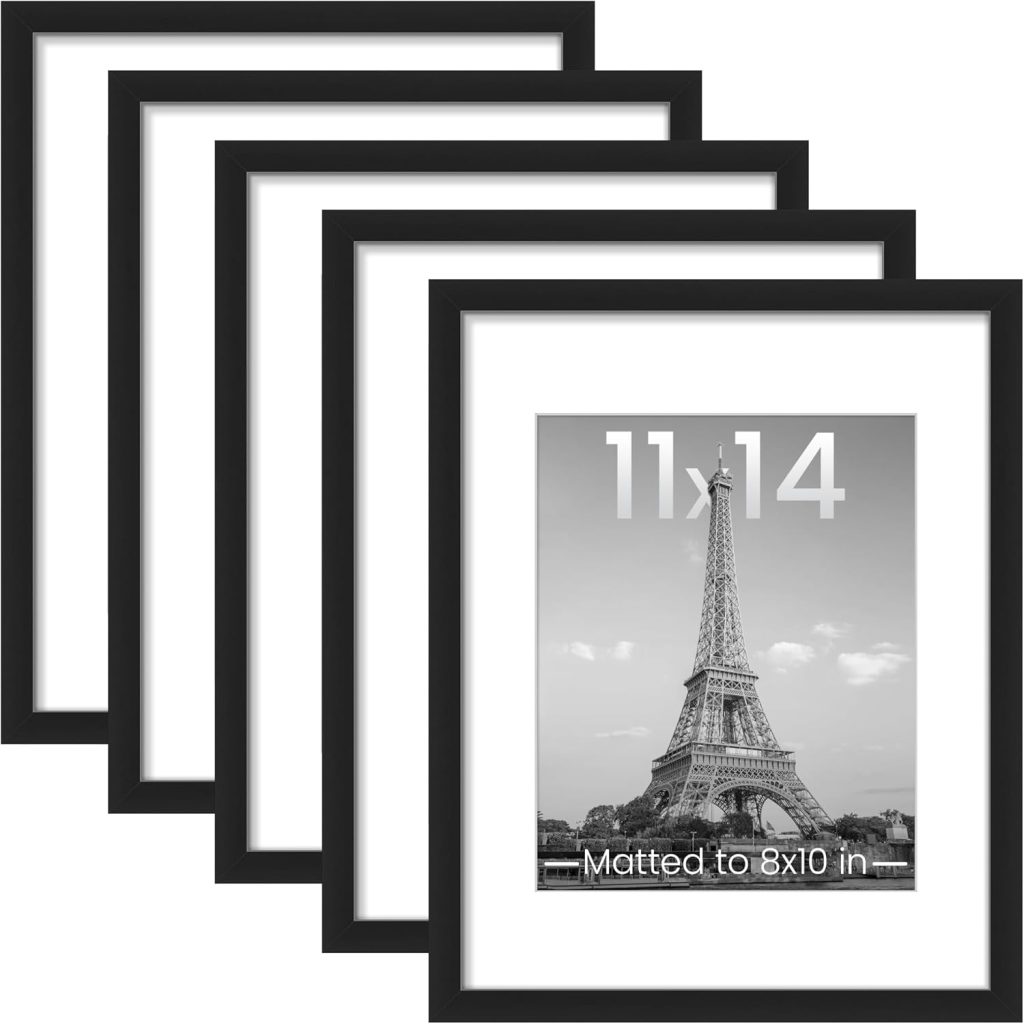
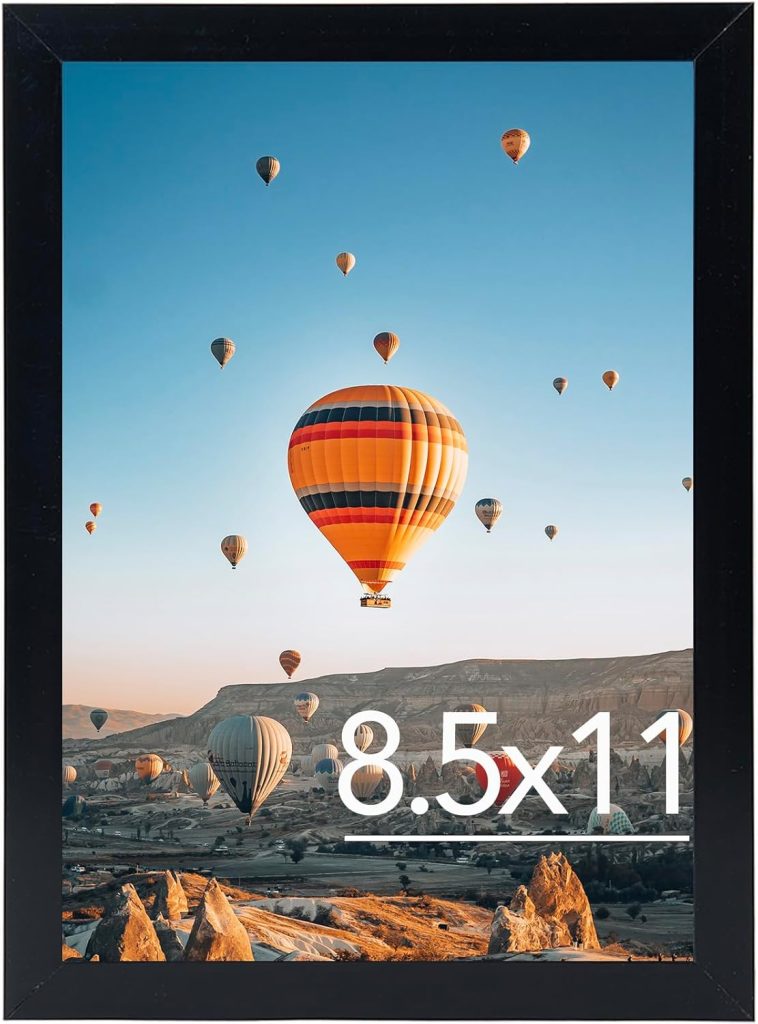

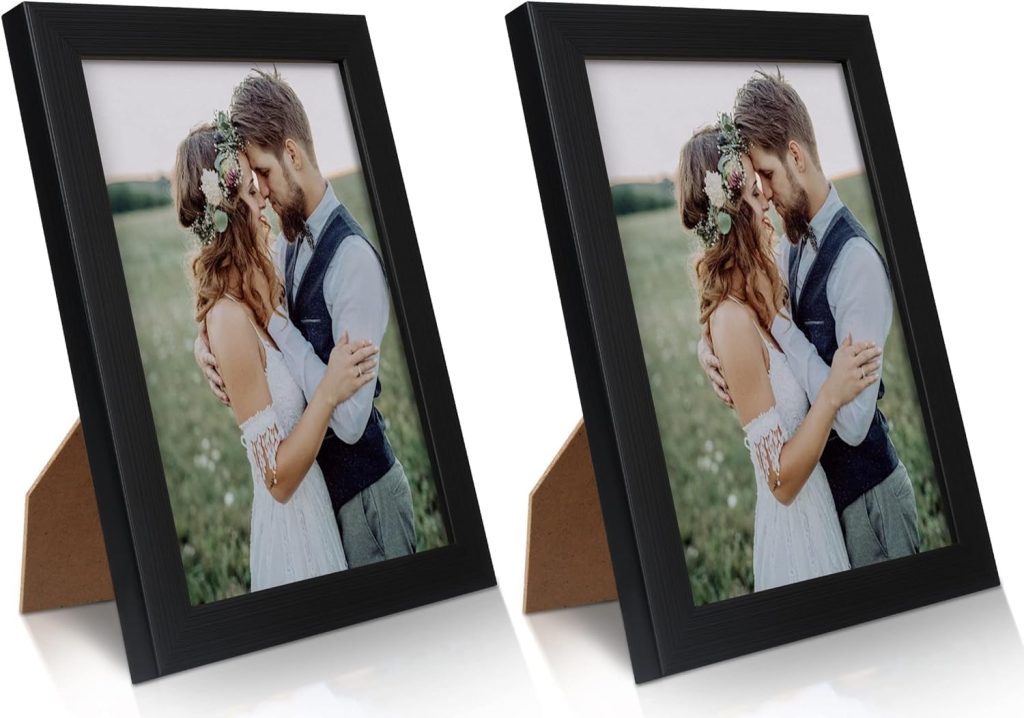

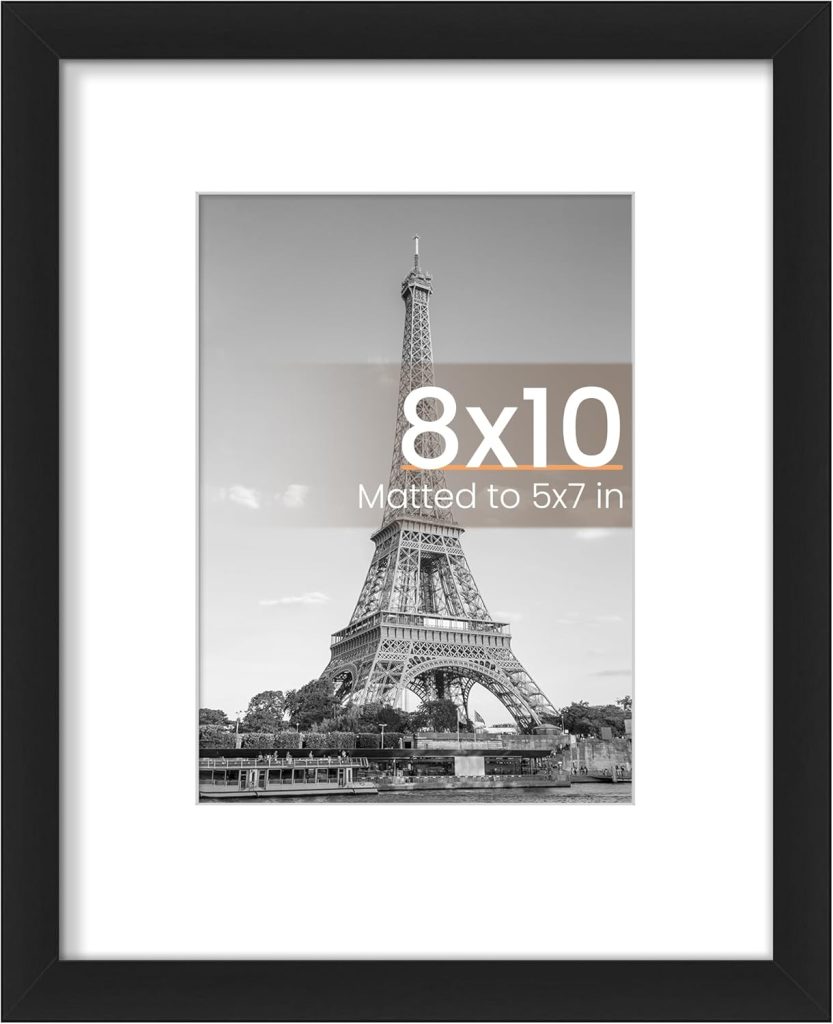
The Ultimate Picture Frame Size Chart – A Complete Guide to Choosing the Right Frame
Selecting the perfect picture frame is an essential part of showcasing your artwork, photos, and memories. Whether you’re framing a family portrait, an artistic photograph, or a prized piece of art, the right frame enhances the visual appeal and presentation. However, with so many different sizes and styles of picture frames available, it can be overwhelming to know where to start.
We’ll walk you through the various picture frame sizes, how to choose the right size for your artwork, and provide a detailed picture frame size chart to help you make an informed decision. We’ll also cover factors like the type of matting, border space, and the overall aesthetic of the frame.
Why Choosing the Right Picture Frame Size Matters
Picture frames come in various shapes and sizes, and each is designed to fit specific dimensions of artwork or photographs. The frame’s size can completely alter the look of the piece, so it’s important to choose one that complements both the artwork and the space where it will be displayed.
- Enhances Visual Appeal: The right frame draws attention to your artwork or photo without overshadowing it. A frame that is too large or too small can make the piece look disproportionate and unbalanced.
- Protects Your Artwork: A frame not only serves as a display but also helps protect your artwork or photo from dust, dirt, and physical damage.
- Fits the Space: Whether you’re framing artwork for your living room, office, or gallery wall, choosing the right frame size ensures that the framed piece fits perfectly in its designated space.
Now that we understand the importance of frame size, let’s dive into a picture frame size chart to make selecting the perfect frame for your artwork easier.
1. Common Picture Frame Sizes Explained
There are several standard picture frame sizes based on industry standards and the most commonly used photo and artwork dimensions. The frame size you choose should be based on the size of the artwork or photograph you’re framing.
Here’s a breakdown of some common picture frame sizes:
A) Small Sizes
- 4×6 inches: This size is often used for personal photos, small prints, or postcards.
- 5×7 inches: Slightly larger than the 4×6, this frame size is popular for portraits, family photos, or matted art prints.
B) Medium Sizes
- 8×10 inches: A popular size for framing individual photos, certificates, or family portraits. This is ideal for prints that need a larger frame but aren’t too large.
- 11×14 inches: Often used for prints, artwork, or larger photographs. This size can be great for matted photos, giving the artwork more emphasis and space around the edges.
C) Large Sizes
- 16×20 inches: Common for photographs, artwork, or posters. This size works well for showcasing posters, larger art prints, or even a collection of smaller photos in a grid.
- 18×24 inches: This size is typically used for large artwork or photo prints, often framed with a large matting for a professional and sleek look.
D) Extra-Large Sizes
- 24×36 inches: Often used for posters or very large art prints. This size is perfect for making a bold statement in larger spaces.
- 30×40 inches: This size is typically used for large-scale artwork or oversized photography prints. It is ideal for large walls where you want to create a significant visual impact.
2. Picture Frame Size Chart
The table below provides a detailed picture frame size chart, including both common frame dimensions and their corresponding matting sizes. This chart is designed to help you determine the frame size you need based on the size of your artwork or photo.
Picture Frame Size Chart
| Frame Size | Mat Opening Size (for photo/art) | Common Use |
|---|---|---|
| 4×6 inches | 4×6 inches | Personal photos, small portraits, postcards |
| 5×7 inches | 5×7 inches | Portraits, family photos, small art prints |
| 8×10 inches | 8×10 inches | Family portraits, certificates, personal photos |
| 8×10 inches | 5×7 inches | Larger photos with a mat to add a decorative border |
| 11×14 inches | 11×14 inches | Photos, artwork, family portraits, certificates |
| 11×14 inches | 8×10 inches | Matting with a border for a professional finish |
| 16×20 inches | 16×20 inches | Posters, large prints, art pieces, family portraits |
| 16×20 inches | 11×14 inches | Matting for artwork or photographs |
| 18×24 inches | 18×24 inches | Larger posters, prints, fine art, and photographs |
| 18×24 inches | 16×20 inches | Popular size for art prints, framing larger photos |
| 24×36 inches | 24×36 inches | Posters, oversized prints, wall art |
| 24×36 inches | 18×24 inches | Large photographs or artistic compositions |
| 30×40 inches | 30×40 inches | Oversized art, large photography, large posters |
3. How to Choose the Right Picture Frame Size
Now that you have a picture frame size chart, let’s break down the key factors you should consider when choosing the right frame for your artwork or photo.
A) Consider the Size of Your Artwork
The first and most important factor is the size of your artwork or photograph. If you’re framing a standard photo, you’ll likely be choosing between frame sizes like 4×6 or 8×10. However, when framing custom-sized prints, artwork, or posters, you may need a custom frame or one of the larger, more uncommon sizes.
B) Matting and Border Space
Matting is the space around your artwork or photo that provides a visual buffer between the image and the frame. It can make your piece look more professional and provide additional dimension. Consider the following:
- Matting Sizes: Matting typically adds an extra 1-2 inches on all sides of the image. For example, an 8×10 photo with matting will require a frame size of 11×14.
- No Matting: If you prefer to frame your piece without matting, choose a frame that matches the exact dimensions of your photo or artwork.
C) Frame Material and Style
Picture frames come in a wide range of materials and styles. You should choose a frame material and style that complements the aesthetics of both the artwork and the space where it will hang. Common materials include:
- Wood: Traditional and elegant, ideal for vintage or classic artwork.
- Metal: Sleek and modern, perfect for contemporary pieces or minimalist designs.
- Acrylic or Glass: Often used for framing artwork that is intended to stand out or require extra protection.
D) Frame Color
The frame color plays an important role in making your artwork stand out. Neutral colors like black, white, and natural wood tones are versatile and complement most pieces. However, don’t be afraid to experiment with bolder frame colors that match the tones in your artwork or provide contrast.
4. How to Measure Your Artwork for a Frame
Measuring your artwork correctly is crucial to finding the right frame size. Here’s how you can measure your piece of art to ensure it fits into the perfect frame:
- Measure the Width and Height of Your Artwork: Use a measuring tape or ruler to carefully measure the dimensions of your artwork. Measure from edge to edge.
- Add Room for Matting: If you want to include matting, add about 1-2 inches to each side of your artwork’s measurements. For example, a 5×7 photo with a 1-inch mat would need a frame size of 8×10.
- Choose the Right Frame: Use the picture frame size chart above to find the frame that corresponds to your artwork’s size. For example, an 11×14 frame would be perfect for an 8×10 artwork with matting.
5. Popular Picture Frame Sizes for Specific Art Forms
Different types of art or photography often require different frame sizes. Here are some recommendations based on specific types of artwork:
A) Photography
- Standard photo sizes like 4×6, 5×7, 8×10, and 11×14 are the most common for framing photographs.
- Larger prints (e.g., 16×20, 18×24) are often used for fine art photography or gallery-style prints.
B) Posters
- 18×24 and 24×36 are popular sizes for posters. Larger posters may require custom framing.
C) Fine Art Prints
- Many fine art prints come in sizes like 16×20, 18×24, and 24×36. These sizes often require professional framing, including matting to preserve the integrity of the print.
D) Certificates or Documents
- 8×10 or 11×14 frames are ideal for displaying certificates, diplomas, or other important documents.
FAQs About Picture Frame Size Selector
1. What is a picture frame size selector?
A picture frame size selector is a tool (online or printed) that helps you choose the correct frame size based on your photo, artwork, or document dimensions.
2. How do I know what size frame I need?
Start by measuring the actual dimensions of your picture (in inches or cm). Choose a frame that matches that size if you don’t want a mat.
If using a mat, the frame will need to be larger than the artwork size.
3. What are the most common frame sizes?
Popular frame sizes include:
- 4″ x 6″
- 5″ x 7″
- 8″ x 10″
- 11″ x 14″
- 16″ x 20″
- 18″ x 24″
- 24″ x 36″
These sizes are widely available for photos, certificates, and posters.
4. What is the difference between frame size and picture size?
- Picture size is the actual size of the image or artwork.
- Frame size refers to the internal dimensions of the frame that will hold the picture (not including the border or outer edge).
5. What is a mat, and how does it affect frame size?
A mat is a border (usually cardboard or fabric) that surrounds your image inside the frame.
Using a mat requires a larger frame — for example, an 8″ x 10″ photo with a 2″ mat would need a 12″ x 14″ frame.
6. Can I use a frame that’s larger than my photo?
Yes, especially if you’re using a mat to center and highlight the image. Just ensure the mat opening matches your image size.
7. How do I select the right frame for a gallery wall?
Start with a layout plan and mix frame sizes for visual interest. Use a size selector or template to help visualize spacing, symmetry, and alignment.
8. Are digital picture frame size selectors accurate?
Yes, most are accurate when you enter exact photo dimensions. Some online tools even allow you to upload an image for virtual framing previews.
9. What if my picture doesn’t match standard sizes?
You can:
- Use a custom frame
- Add a custom mat
- Choose the closest standard size and trim the image (if appropriate)
10. Where can I find a reliable frame size chart or selector?
You’ll find size selectors and charts on:
- Photo printing websites (Shutterfly, Snapfish)
- Frame retailers (Michaels, IKEA, Framebridge)
- Home décor stores and framing apps
6. Conclusion
Choosing the right picture frame size is essential for displaying your artwork and photographs beautifully. Whether you’re framing personal photos, posters, or professional art prints, knowing the appropriate frame size is crucial to getting the best visual effect.
By referring to the picture frame size chart provided in this guide, you can easily determine which frame will work best for your needs. Don’t forget to consider the matting, frame style, and material when making your decision, as these factors will enhance the overall look of your framed piece.
Take your time in selecting the right frame size, and ensure that your artwork is showcased to its full potential. Whether you choose a classic black frame, a sleek metal design, or a natural wood frame, the right choice will make all the difference in how your artwork is presented. Happy framing!


